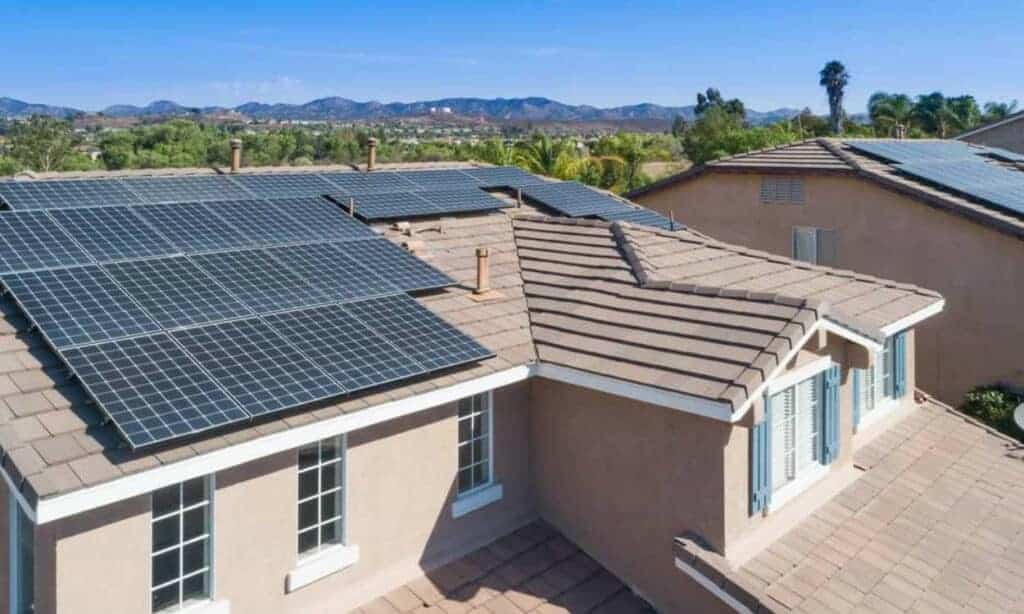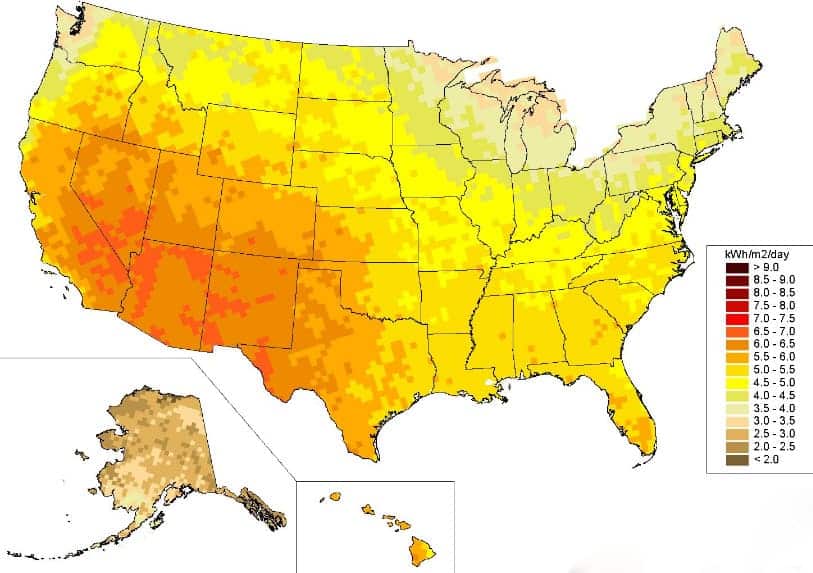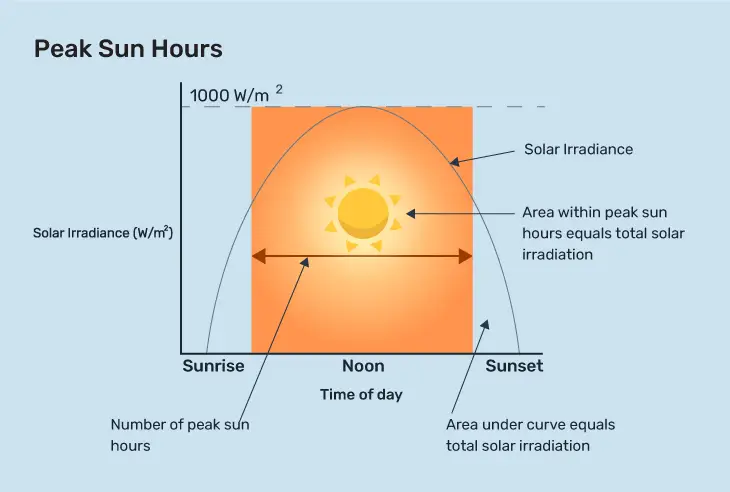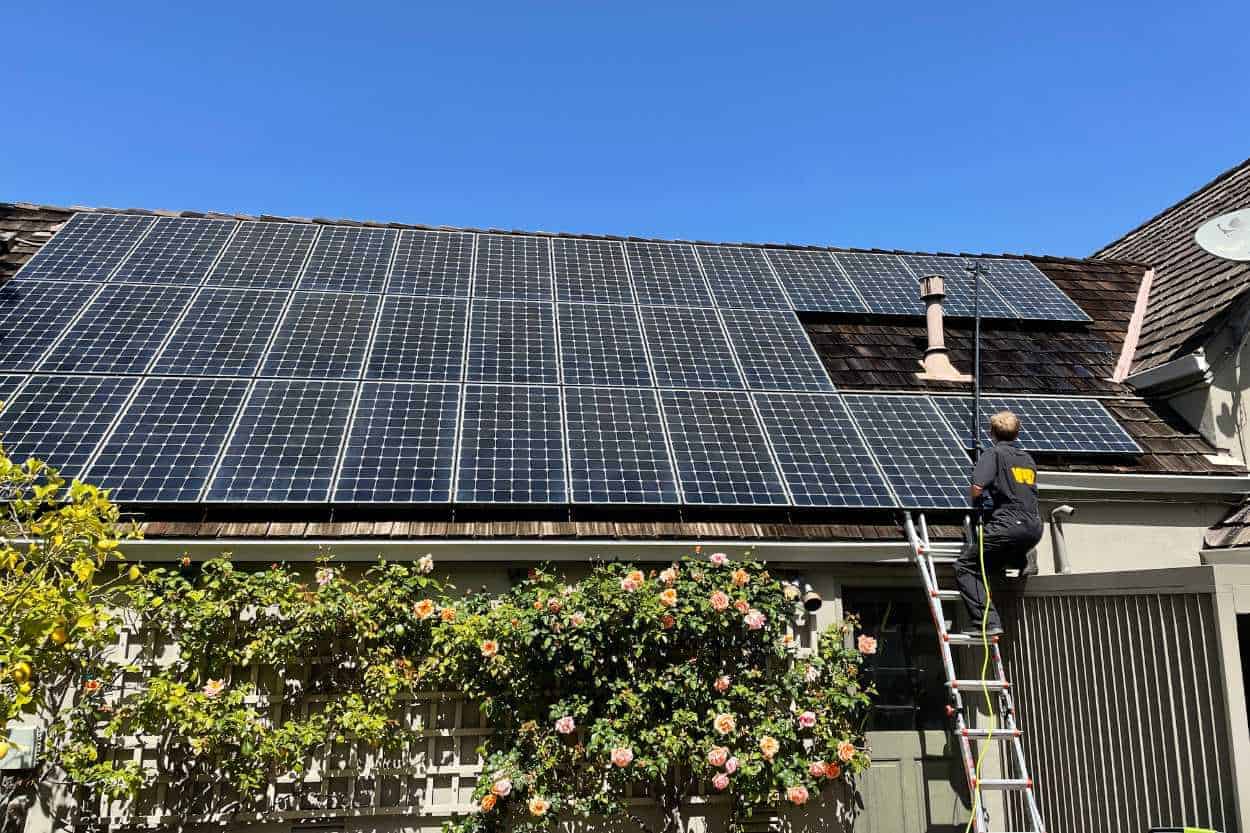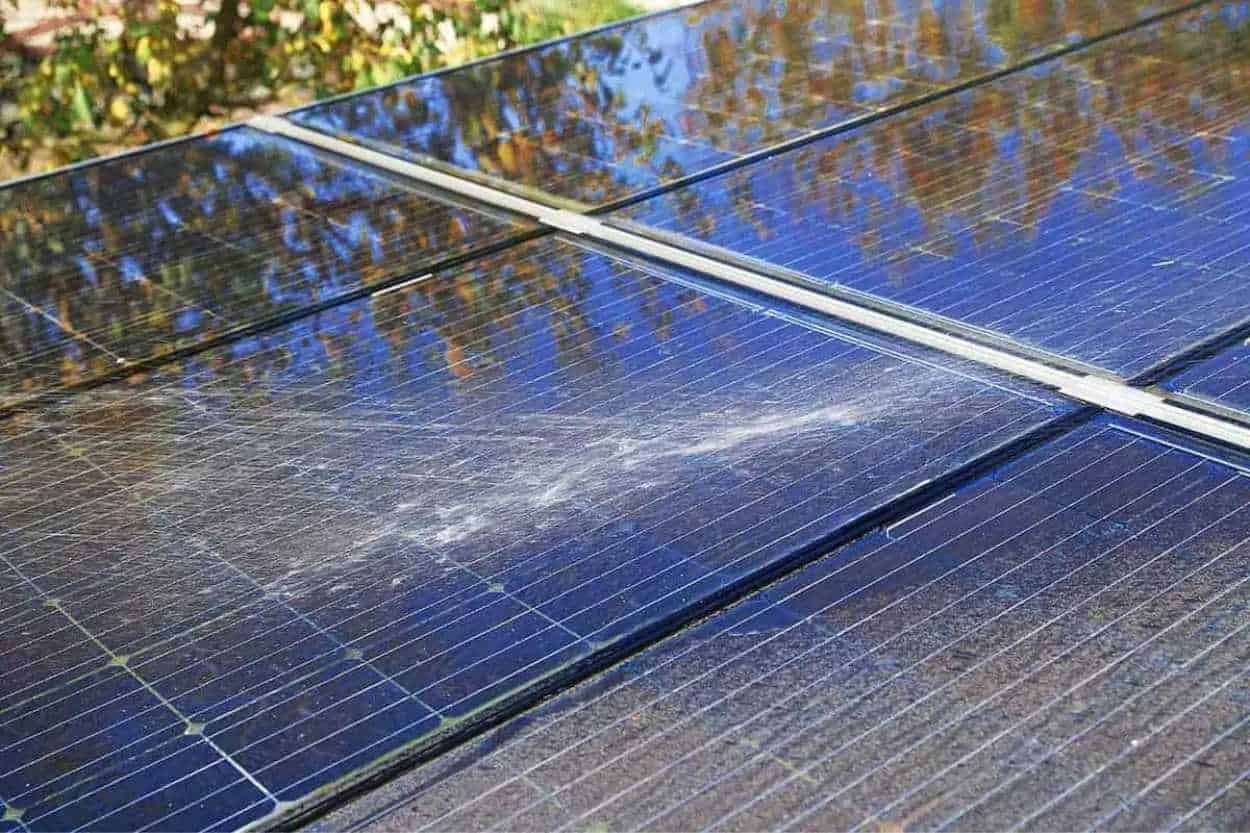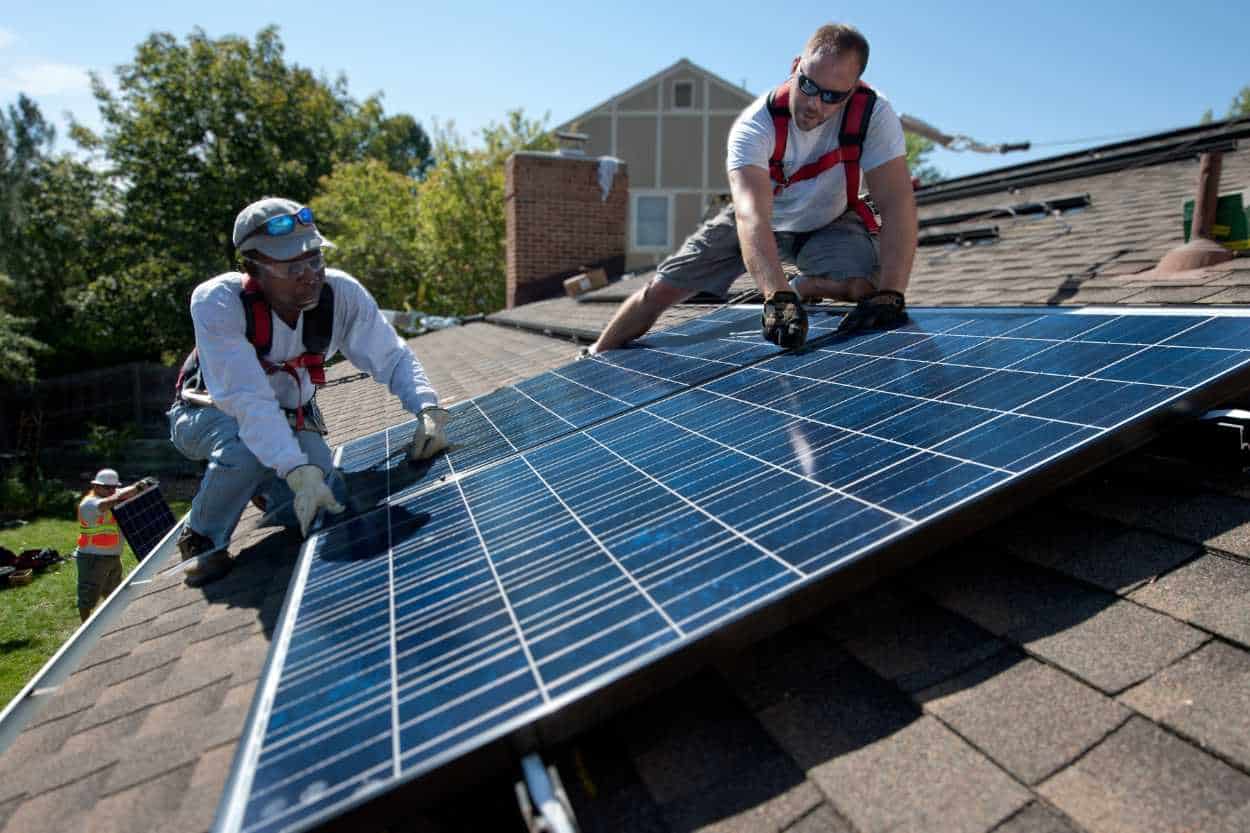Installing solar panels can be complicated. You need to consider many factors to get the most out of your system. And figuring out the correct number of panels is one of them.
The number of solar panels depends on the panel’s size and output and your area’s peak irradiation hours. You should also consider energy loss. For a 350-watt panel in an area with 4 hours of peak sunlight, you’ll need 32 panels.
You can’t generate your target amount of power if you don’t install enough panels. Keep reading for an accurate calculation.
Solar Panel’s Output
A solar panel’s power output is the amount of power it produces per hour. The manufacturers state this value in their product specs. Residential solar panels range between 100 and 400 watts. But most commonly, they’re 350 and 400 watts.
A 350-watt panel produces 350 watts of power per hour. But this is the maximum power the solar panel can generate under ideal conditions. Its output depends on many factors. The most crucial factor is the input, which is sunlight, and I’ll explain below.
Peak Hours
The number of hours your area gets sunlight affects the number of solar panels you need. However, peak hours aren’t simply the length of time that the sun is in the sky. By peak hours, we mean the hours when the sun shines at the highest intensity.
Depending on the season and location, your area’s peak hours will vary. The closer you are to the equator, the more sunlight you get during the day. And summertime increases peak hours.
The peak sunlight hours indicate the period when solar panels can generate energy most efficiently due to the intensity of sunlight. This is the standard measurement for peak hours.`
Solar panels can produce their promised output when they receive peak sunlight. For example, a 400-watt panel with 5 hours of peak sunlight generates 2000 Wh daily. To get the monthly 1000 Kwh power, you need 16 solar panels. But other factors can increase this number.
You may get 8 hours of sunlight during the day, but not all of it is at the highest intensity.
The average peak hours in the United States is 3 to 5 hours. Still, it depends on your location. You can use online calculators to get your area’s exact peak hours.
| State | Average Peak Hours |
|---|---|
| Alabama | 5.0 |
| Alaska | 4.5 |
| Arizona | 6.5 |
| Arkansas | 5.5 |
| California | 5.8 |
| Colorado | 5.6 |
| Connecticut | 4.5 |
| Delaware | 4.8 |
| Florida | 5.5 |
| Georgia | 5.2 |
| Hawaii | 5.8 |
| Idaho | 5.0 |
| Illinois | 4.7 |
| Indiana | 4.6 |
| Iowa | 4.8 |
| Kansas | 5.3 |
| Kentucky | 4.7 |
| Louisiana | 5.1 |
| Maine | 4.5 |
| Maryland | 4.9 |
| Massachusetts | 4.6 |
| Michigan | 4.2 |
| Minnesota | 4.7 |
| Mississippi | 5.1 |
| Missouri | 4.9 |
| Montana | 5.0 |
| Nebraska | 5.2 |
| Nevada | 5.7 |
| New Hampshire | 4.5 |
| New Jersey | 4.5 |
| New Mexico | 5.9 |
| New York | 4.5 |
| North Carolina | 5.1 |
| North Dakota | 5.0 |
| Ohio | 4.4 |
| Oklahoma | 5.2 |
| Oregon | 4.5 |
| Pennsylvania | 4.4 |
| Rhode Island | 4.5 |
| South Carolina | 5.3 |
| South Dakota | 5.1 |
| Tennessee | 4.7 |
| Texas | 5.5 |
| Utah | 5.6 |
| Vermont | 4.2 |
| Virginia | 4.9 |
| Washington | 4.3 |
| West Virginia | 4.6 |
| Wisconsin | 4.5 |
| Wyoming | 5.1 |
Solar Panel’s Efficiency
As mentioned, a solar panel has a maximum output determined by the manufacturer. However many factors affect its efficiency and reduce its capacity to produce the promised output. They include:
Temperature
Solar panels thrive in sunlight.But temperature isn’t their best friend because the electrons in the photovoltaic cells slow down in high temperatures. High temperatures can reduce efficiency by up to 25%.
They perform best at 77 ℉ (25 ℃), which is also their testing temperature at the factory. So, if your area gets hotter than this during the summer, you can expect your solar array to get less efficient.
Low temperatures aren’t bad for solar arrays. But shorter days and snowfall during winter can hurt your solar panel’s performance. If you get snow in your area, your solar panel’s efficiency will reduce by 1.6-5.3%. That’s because snow covers the panels and blocks sunlight.
Dirt
Your solar panel works best when it can absorb maximum sunlight. Anything that can block this absorption will reduce its maximum output. Dirt can accumulate over time on the panels and form a layer that covers the surface. It can reduce your system’s efficiency by 2%.
That’s why installing the array at a 35-degree angle and avoiding flat panels is recommended.
Plus, it’s a good idea to wash your panels if it’s dirty.
Materials
Most solar panels are made of silicon. However, their manufacturing process is different and affects their performance. They can fall under these categories:
- Monocrystalline Silicon: These are the most efficient types. They have a single-cell design, manufactured in large, uniform wafers. Then, they’re cut into smaller cells to fit your design. They’re black.
- Polycrystalline Silicon: Several silicon crystals are melted and joined to create a single cell. Polycrystalline cells are blue, less efficient than monocrystalline, but less expensive.
- Amorphous silicon. As the name suggests, these cells are flexible. And you can see them in thin-film solar panels. These are the least efficient of the three.
Construction
The construction of your solar panel involves many factors, including
- Installation angle. The panel’s angle affects its sunlight absorption. To maximize efficiency and absorption, install your array at an angle of 30-40, depending on your area and location.
- Airflow gaps. The distance between the panels and the roof can help reduce temperatures and prevent the loss of efficiency.
- Avoiding shaded areas is crucial for getting maximum sunlight. If you can’t avoid shades, get shade-proof panels.
- Wiring. You can connect your panels through different wiring types. They include parallel, series, and mix. The series wiring affects voltage. The parallel connection determines the current. Consult your installer to get the best results.
Calculating the Number of Solar Panels Required for 1000 kWh Per Month
Working out the number of solar panels for 1000 kWh per month is easy. Here are the steps.
- Calculate the daily wattage. Divide 1000 by 30, the number of days in a month. You’ll get 33.3 kWh.
- Multiply the panel’s output by the number of peak hours. If you get 4 hours of insolation, your 350-watt panel can generate 1.4 kilowatts daily.
- Account for the losses we discussed earlier. Experts suggest considering a 25% loss. Multiply the daily kilowatts by 0.75. In our case, we’ll get (1.4 × 0.75 = 1.05).
- Divide 33.3 by your daily wattage. The result is the ideal number. In our example, it will be (33.3 / 1.05 = 31.7, rounding up to 32).
So, to get 1000 kWh a month from a 350-watt panel, you’ll need 32 panels. Let’s factor in different variables.
| Solar Panel Size | 4 hours of peak sunlight | 5 hours of peak sunlight | 6 hours of peak sunlight |
| 100 watt | 111 | 89 | 74 |
| 200 watt | 56 | 45 | 37 |
| 300 watt | 37 | 30 | 25 |
| 400 watt | 28 | 23 | 19 |
Potential Challenges and Solutions
Going solar is probably one of the best decisions you can make. It lets you offset your electricity bills, go green, and earn money after breaking even. But some challenges are inevitable.
Costs of Installation
The biggest challenge of installing a solar array is its relatively high costs. The cost of installing a solar panel depends on many factors, including
- Type and technology of panel
- Size (wattage)
- Number of panels
- Installer Company
But you can expect to pay $2-$3 per watt. That’s equal to $15,000-$35,000 for an entire system. So, before going solar, you should decide if it’s the best option. If you don’t consume much power or live in an area with low sunlight, it may not be the right decision.
But if you decide to take the plunge, you can use many federal and local incentives to offset the costs. These incentives can vary depending on your state. But here’s what you can explore:
- Federal Tax Incentives. You can reduce your federal income tax by 30% of the total cost of the solar panel installation.
- Net Metering. You can sell your electricity to your local grid and receive credits.
- Property Tax Exemptions.After adding solar panels, your property value increases. But you don’t need to pay extra taxes.
- Loans and rebates. Local governments give many attractive incentives. Consult your installer to review all your options.
Seasonal Changes in Sunlight
Sunlight is less in cold seasons. There are rainy, cloudy, and snowy days, hindering sunlight. Plus, the sun’s angle is different in winter, reducing absorption. Your solar panel generates power in these weather conditions. But it’s considerably lower.
These factors can reduce your system’s output. But you can offset it by taking proper measures.
- Install the panels at the right angle and location for maximum light. Avoid shadows and trees.
- Remove snow from the panels as soon as it accumulates.
- Install bigger panels to produce more energy. Consult your installer and calculate your annual power requirements to get enough panels.
- Invest in an efficient storage system to carry your generated power to the lean months.
Maintaining Solar Panels for Maximum Efficiency
Maintaining your solar panel has a significant impact on keeping it efficient. Regular maintenance ensures the panel is clean and in tip-top shape.
Dust accumulation is the worst enemy of your solar panel. It can form a layer that prevents the sun from getting absorbed. Plus, it acts as an insulation layer that traps heat. So, the panel can’t cool down effectively.
Besides, the dust can harden and stick to the panel’s surface. It can degrade the cells over time. So, it’s essential to keep your panels clean by washing them regularly.
Also, inspect the panels every two or three weeks. Look for cracks, broken wires, or dents in the cells. Fix the defects to keep the system efficient and prolong its lifespan.
Conclusion
Calculating the exact number of panels requires knowing the peak hours and the panel’s size. You should also factor in a 25% power loss because all panels inevitably experience inefficiencies.

